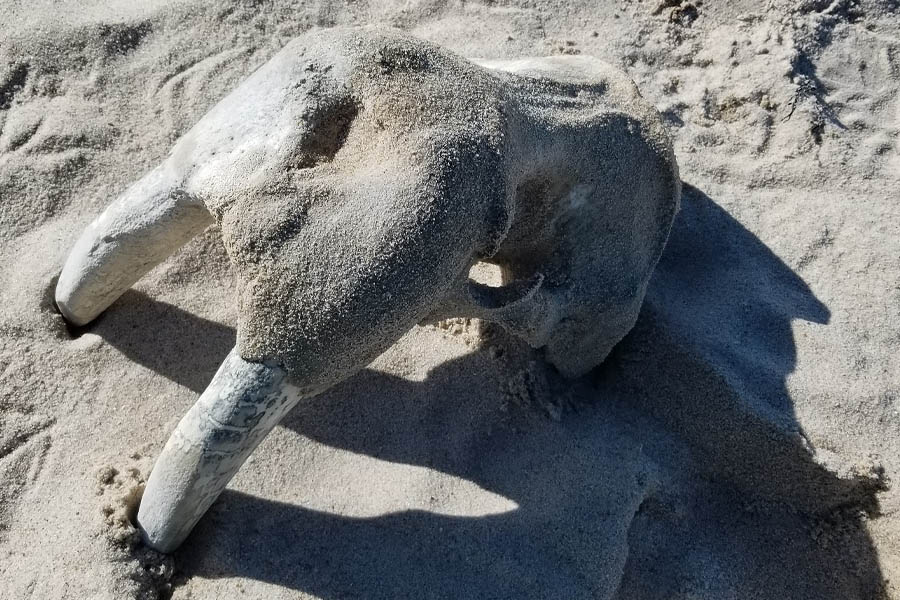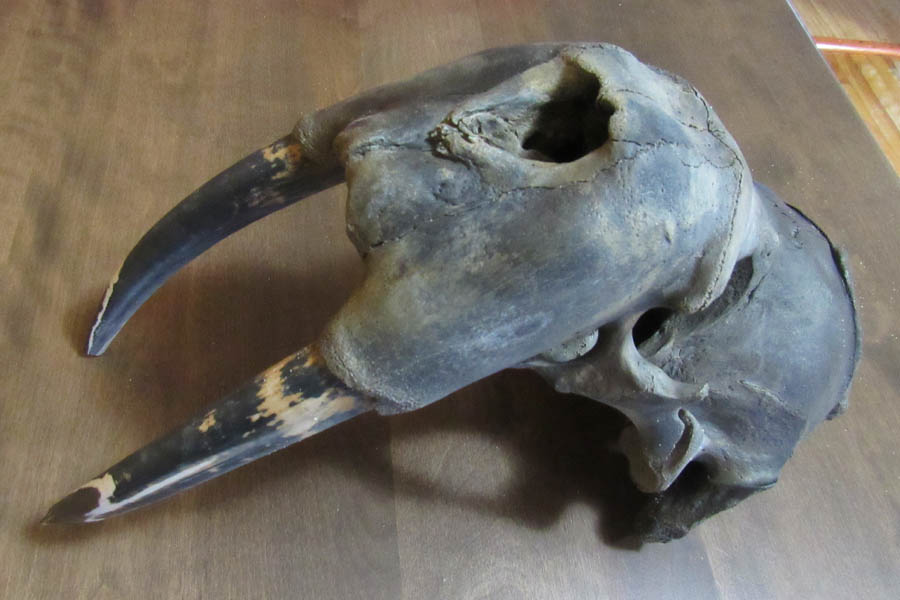
Atlantic walrus
Sable Island National Park Reserve
The Atlantic walrus once inhabited and likely bred on Sable Island. However, by the late 1800s, uncontrolled harvesting led to the species' disappearance from the island and surrounding waters.
Today, walrus skeletal remains (tusks, skulls, and lower jaws) can still be found in the shifting sands on Sable Island.
Historical documentation
Records from 1635 note the presence of sea-horses (which, at that time, referred to walruses) on the Island:
Mr. Graves, in the James, and Mr. Hodges, in the Rebecka, set sail for the Isle of Sable for sea-horse (which are there in great number) and wild cows.
Mr. John Rose, being cast ashore there in the [Mary and Jane] two years since, and making a small pinnace of the wreck of his ship, sailed thence to the French upon the main, being thirty leagues off, by whom he was detained prisoner, and forced to pilot them to the island, where they had great store of sea-horse teeth, and cattle, and store [of] black foxes ; and they left seventeen men upon the island to inhabit it.
The island is thirty miles long, two miles broad in most places, a mere sand, yet full of fresh water in ponds, etc.
He saw about eight hundred cattle, small and great, all red, and the largest he ever saw, and many foxes, whereof some perfect black.
There is no wood upon it, but store of wild peas and flags by the ponds, and grass. In the middle of it is a pond of salt water, ten miles long, full of plaice, soles, etc.
The company, which went now, carried twelve landmen, two mastiffs, a house, and a shallop.
An extirpated species
The walruses on Sable Island were part of the Northwest Atlantic walrus population and they once inhabited the coastal areas of southeastern Canada along the shores of New Brunswick, Nova Scotia, Newfoundland, and the Gulf of St. Lawrence.
However, this population of Atlantic walruses is not found in Canada anymore. In the 1700s and 1800s, the Northwest Atlantic walrus population was heavily hunted for their ivory tusks, hides, and fat. Due to overharvesting, the Northwest Atlantic walrus is now classified as ‘extirpated’ under the Species at Risk Act.
Maritime walrus
Using skulls collected primarily on Sable Island, researchers discovered that the walruses that used to live in the Canadian Maritime provinces may have been a distinct group called the Maritime walrus.
Using skull measurements and DNA comparisons, researchers have identified a few notable differences between Maritime walruses and other Atlantic walruses. One difference, for example, is that Maritime walruses have bigger and thicker skull features (skulls, lower jaws, and tusks).
Other Atlantic walrus populations
The Atlantic walrus inhabits the northern shorelines and coastal areas of Svalbard (Norway), Greenland, Canada, and Russia.
Other populations of Atlantic walruses still exist in Canada today. These populations inhabit the northern waters of the arctic and subarctic.
Friendly giants
These marine mammals are massive, weighing up to 1.5 tons. Walruses have long tusks, stiff whiskers and flat flippers. They have wrinkled hides that range from light brown or grey to pink in colour. Walruses also have thick blubber, which insulates them from the cold oceanic waters.
Diet
Their diet consists mainly of seafloor invertebrates like clams, molluscs, worms, sea cucumbers and shrimp.
Herds
Walruses are sociable animals; they live in large groups called “herds,” which are separated by gender. Males and females each have distinctive herds.
Additional reading
McLeod, B. A., Frasier, T. R., and Lucas, Z. 2014. Assessment of the extirpated Maritimes walrus using morphological and ancient DNA analysis. PLoS ONE, 9(6).
Related links
- Date modified :

